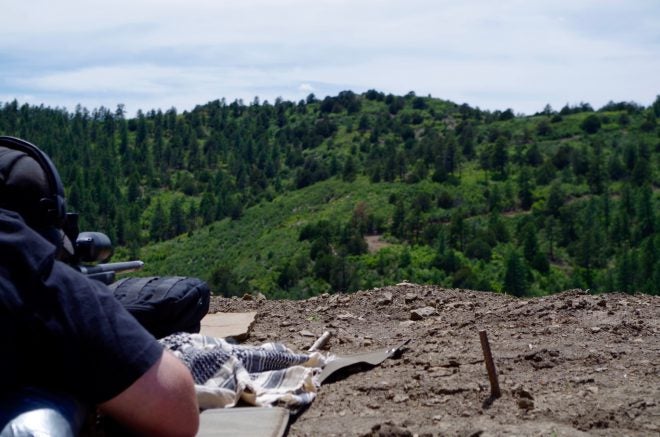Background
I do not have a history with bolt action precision rifles. My only real experience was with a beat up Mosin Nagant, and I was lucky to fire five to six rounds in a range trip before having to have my shoulder dislocation reduced.
Fast forward to a couple of months ago, and my editor informed me that I would get the opportunity to review a Christensen Arms Ridgeline rifle in 6.5 Creedmoor (be on the lookout for the review which will be out shortly). If I’d had a camera trained on me at the time I would have been able to post a picture showing a very baffled Tom. (yes, I live under a rock with regards to some topics). So why not send the rifle to someone that had more experience in that realm? No idea. But it was very serendipitous.
I had been doing some medical training with the staff at the NRA Whittington Center, and I offered to trade my training for some of theirs. And they happened to have a Precision Long Range course, taught by none other than Jon Weiler (of Survival Trial fame; and who I had just interacted with not two weeks prior).
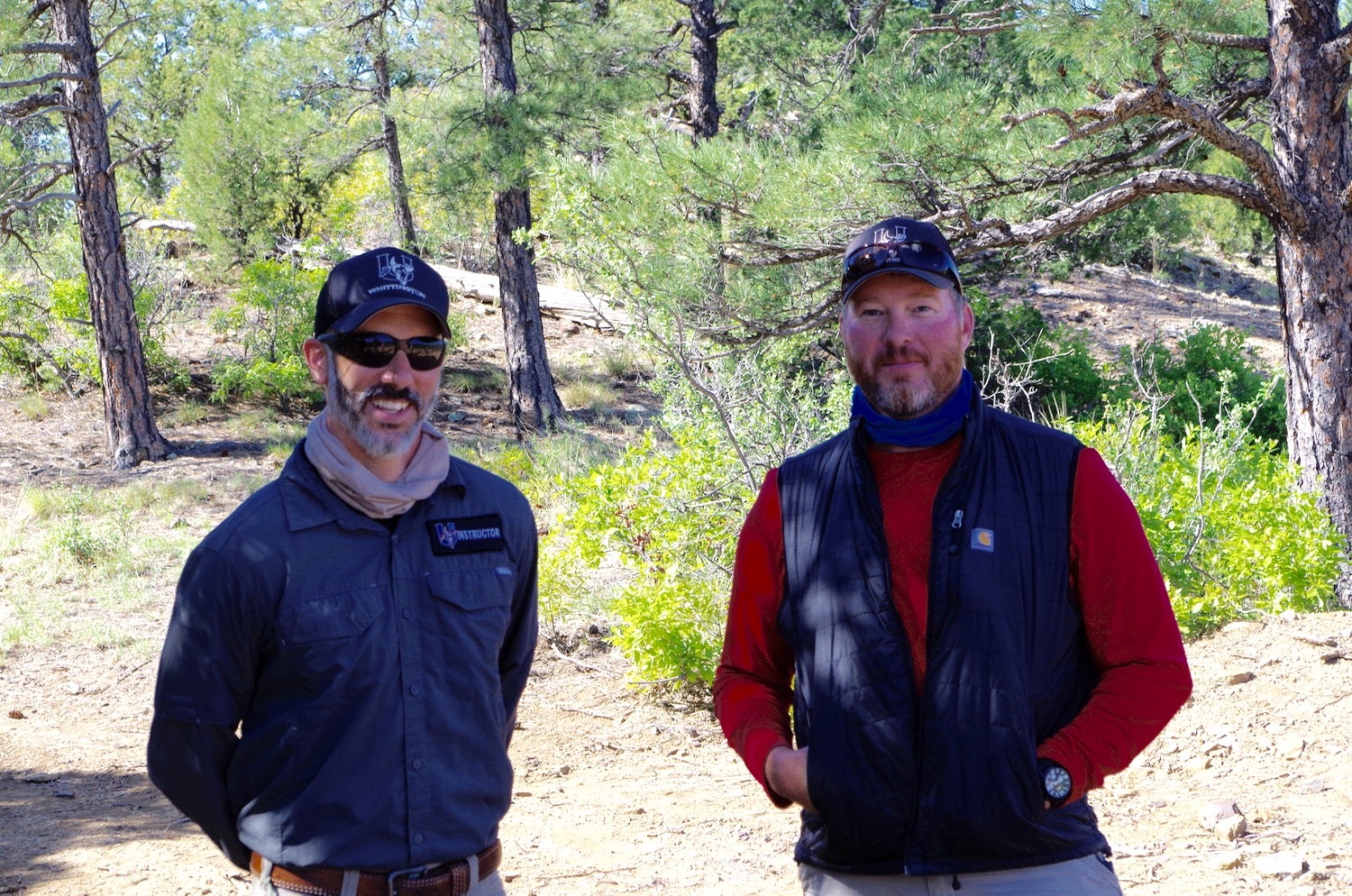
Precision Long Rifle 1 Instructors: Jon and Shane
Since I knew I would be taking a class, and there was no way in hell my loving wife would approve the long term purchase of something like the Christensen Arms Ridgeline (yes, I intuitively knew I would get addicted), I talked to Walt at BMC and he offered to help me build out a Remington 700 in .308 Win. Which was arguably something more suited to my perceived skill level, and something I could grow into. After talking with Jon, he told me to bring both to the class.
The Class
The Precision Long Range series of classes are part of the cleverly titled “School of 1000 Yards” under Whittington University at the NRA Whittington Center, and staffed by instructors from Professional Marksman Inc. Did you follow that? Good… 🙂
The level one class is really about the fundamentals, though Jon indicated that we would be hitting targets out to 1200 yards. Consistently. Even with .308 Win. Even me, in my uneducated state found that to be somewhat incredulous. Seriously? Twelve football fields? Over two-thirds of a mile? That is the stuff of military secret squirrel snipers, ninja assassins, and the like. I mean, sure the rounds will go that far, and even a blind squirrel will find a nut sometimes (i.e. mortals can hit a target once in a while at that distance).
Well, let me tell you. Myth is busted. If you apply some basic principles (learned in the class; I’m sure some other shooting schools have similar curriculum) it is actually pretty straightforward to shoot both precisely and accurately at distances over 1000 yards assuming you have a cartridge that has enough energy to reach that far.
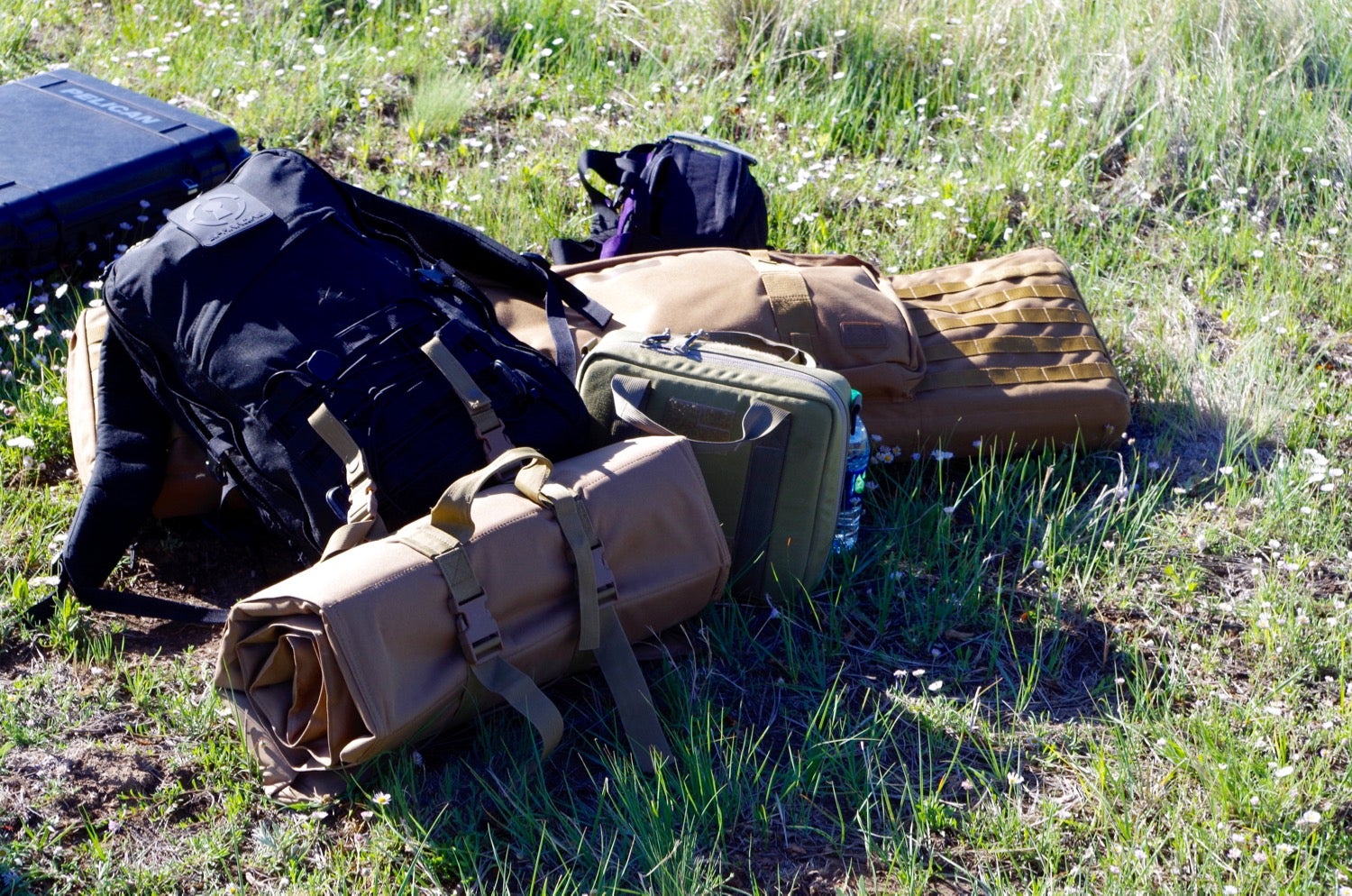
Pile ‘o gear. We did all of our shooting from packs. A shooting mat was required as well as a spotting scope and, of course, your rifle.
Precision Long Range 1 was a three day class set in what has been termed a “shooter’s paradise” (credit to Jason C. for that phrasing) in the northern part of New Mexico.
Day one was 100% classroom, split into two main sections: internal ballistics and external ballistics. Basically the stuff that happens inside the rifle and the stuff that happens once the bullet has left the barrel and is outside the rifle.
Day two was sight in, and shooting out to the paltry distance of 600 yards.
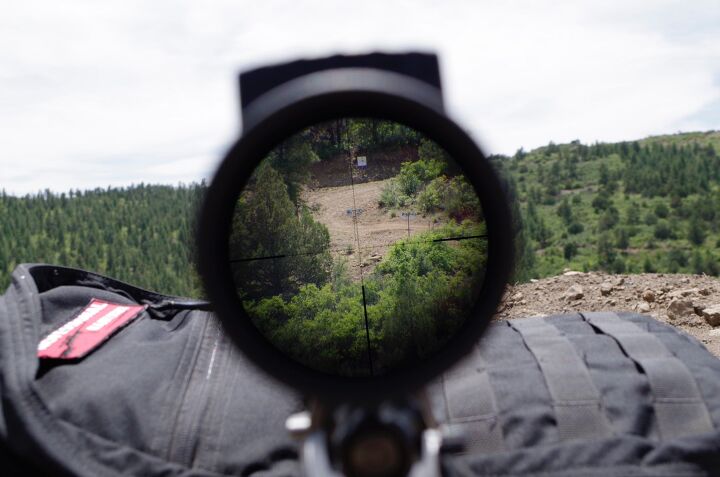
Meh. 600 yards. Hardly a challenge at all…
Day three was putting it all together. Our shortest distance was 640 yards, culminating in shots to 1200 yards.
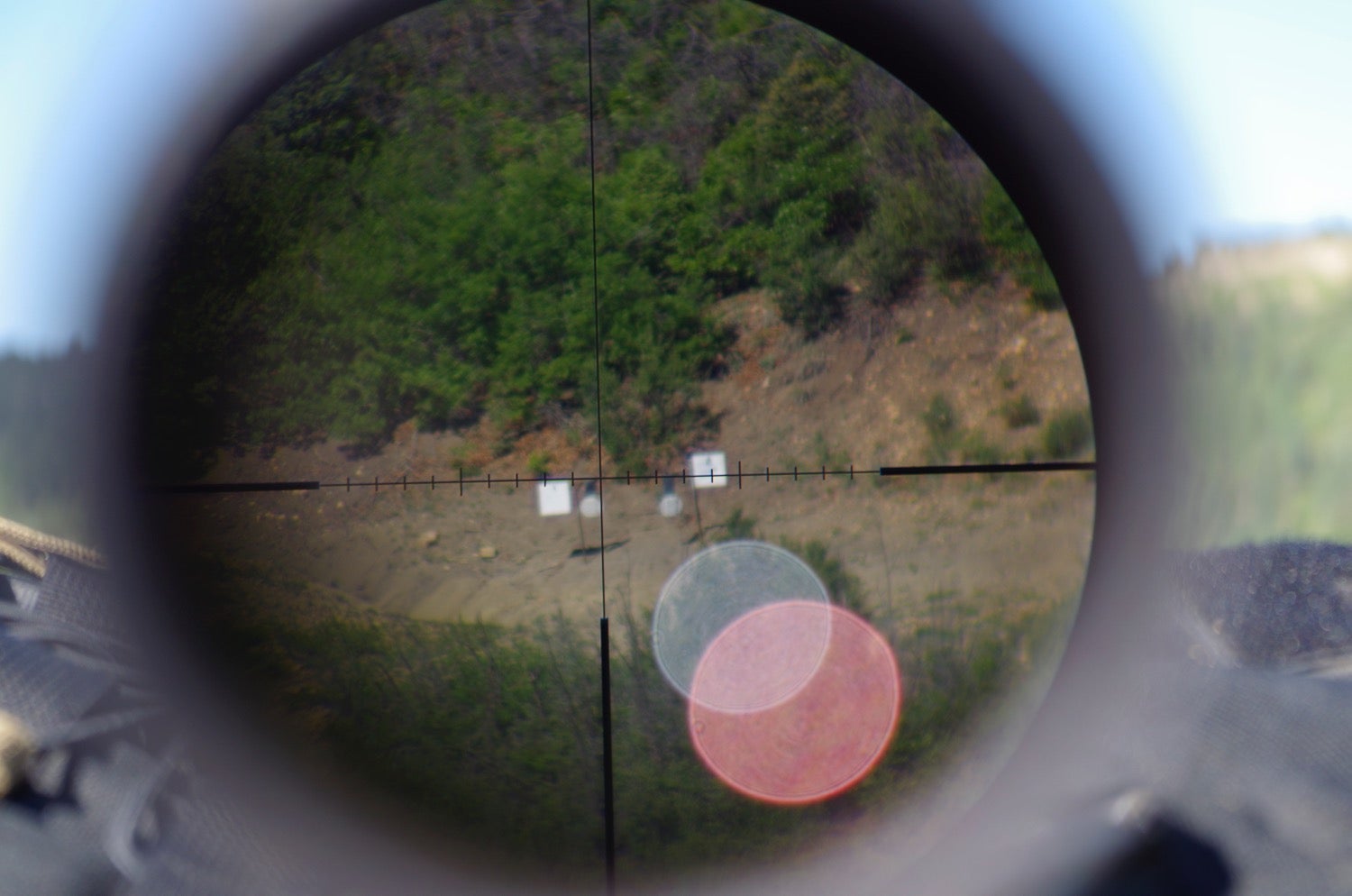
Meh. 840 yards is hardly a challenge at all… 🙂
And the class was not just about shooting. It was also about learning to be a good spotter and to be able to communicate well as a shooter/spotter team. I could not have made the shots I did without “Mack”, my spotter making good calls and giving me the correct hold overs to account for wind and density altitude adjustments.
Observations
The class was run very safely, but also with adult rules. Shooter/spotter teams were responsible for running their station, and the instructors floated back and forth between the teams. We got equal time with each instructor, and both Jon and Shane contributed to the exceptionally successful shooting that all of the students enjoyed. For example, Shane help correct my ballistic charts (which I had computer generated). After observing a few shots that were precise, but not accurate, he suggested that the velocity of my commercial ammo may not have been exactly what was listed on the box (since the box didn’t list the configuration of the rifle used to get those numbers). He showed me how to back calculate the velocity based on the behavior we saw, which allowed me to correct the holds and then significantly increase my accuracy (basically we were seeing about 120 less feet per second from ammo in a particular lot; I will be chronographing some of the rounds later this month to confirm).
We had a small class, only four students (they take a maximum of twelve). Which translated to some seriously awesome one-on-one time with the instructors. It basically meant private instruction for a shooter/spotter team. My biggest fear is that they will start filling up classes to max capacity by the time I am able to take the level 2 class… 🙂 I would love to take level two (and level 3) with “Mack”, Dave and Tim (the other students in the class).
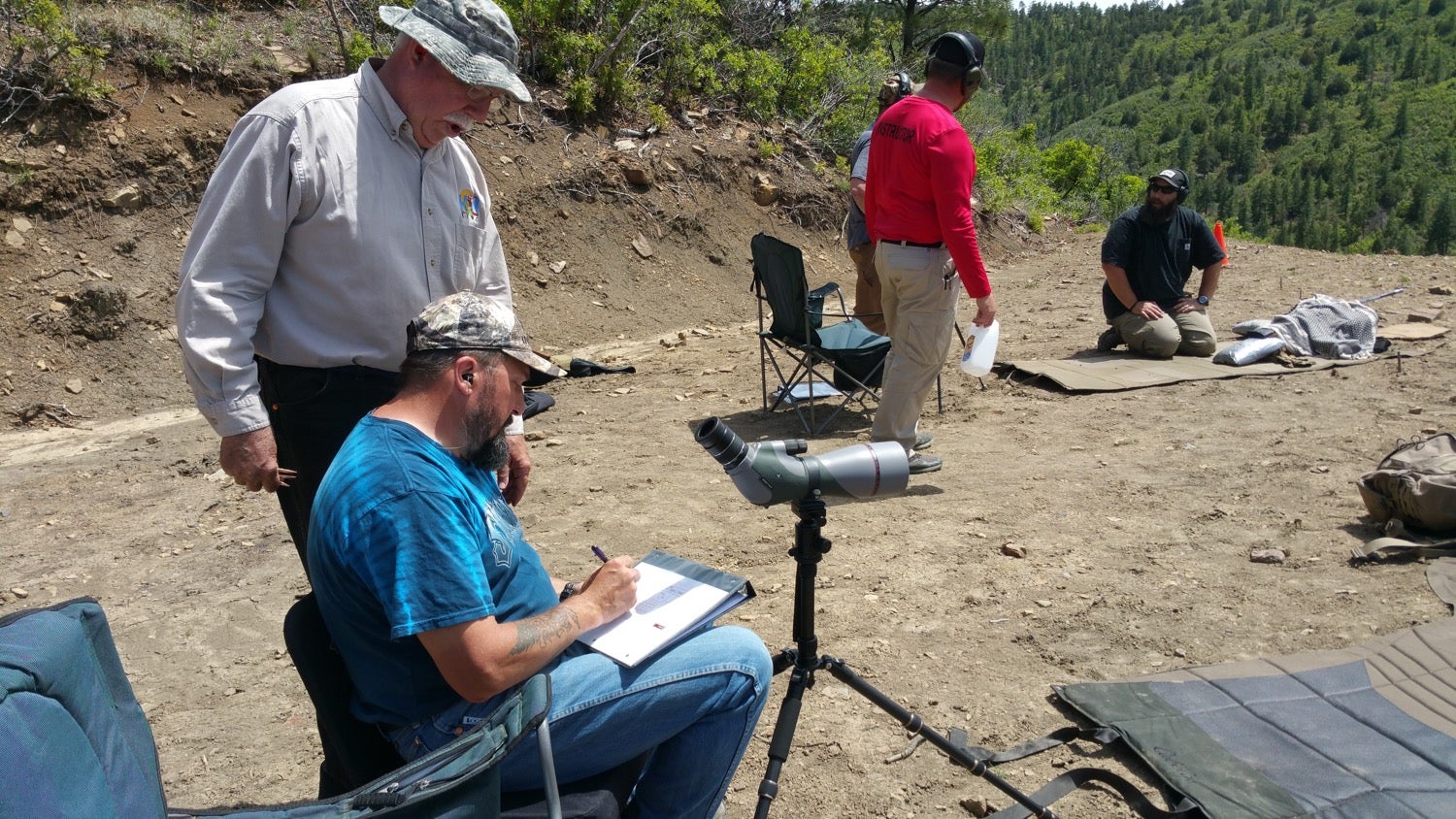
The small class provided a ton of hands on and personalized attention from the instructors.
I had the unique opportunity to shoot both of the two most common (and popular) cartridges seen in the class, the 6.5 Creedmoor and the .308 Win. I was also able to consistently ring steel at 1200 yards with both, though I will concede, the 6.5 Creedmoor is a superior cartridge at that distance (being more consistent due to its better retained velocity). And the Christensen Arms rifle I shot was just right proper sexy.

Christensen Arms Ridgeline in 6.5 Creedmoor
Both rifles were brand new, and I had never fired either prior to the class. The first rounds fired were actually during sight in. I had always heard that precision rifles should be “broken in” prior to real usage, and I was a bit nervous as I had not done that before coming to the class. My fears were assuaged when I was told I could just break the rifles in by shooting them rather than some strange ritual of shooting-cleaning-shooting-moondancing-cleaning-shooting-etc. And guess what? It was fine. (though please discuss in the comments–do you have a break-in ritual, and if so, what is it and why)
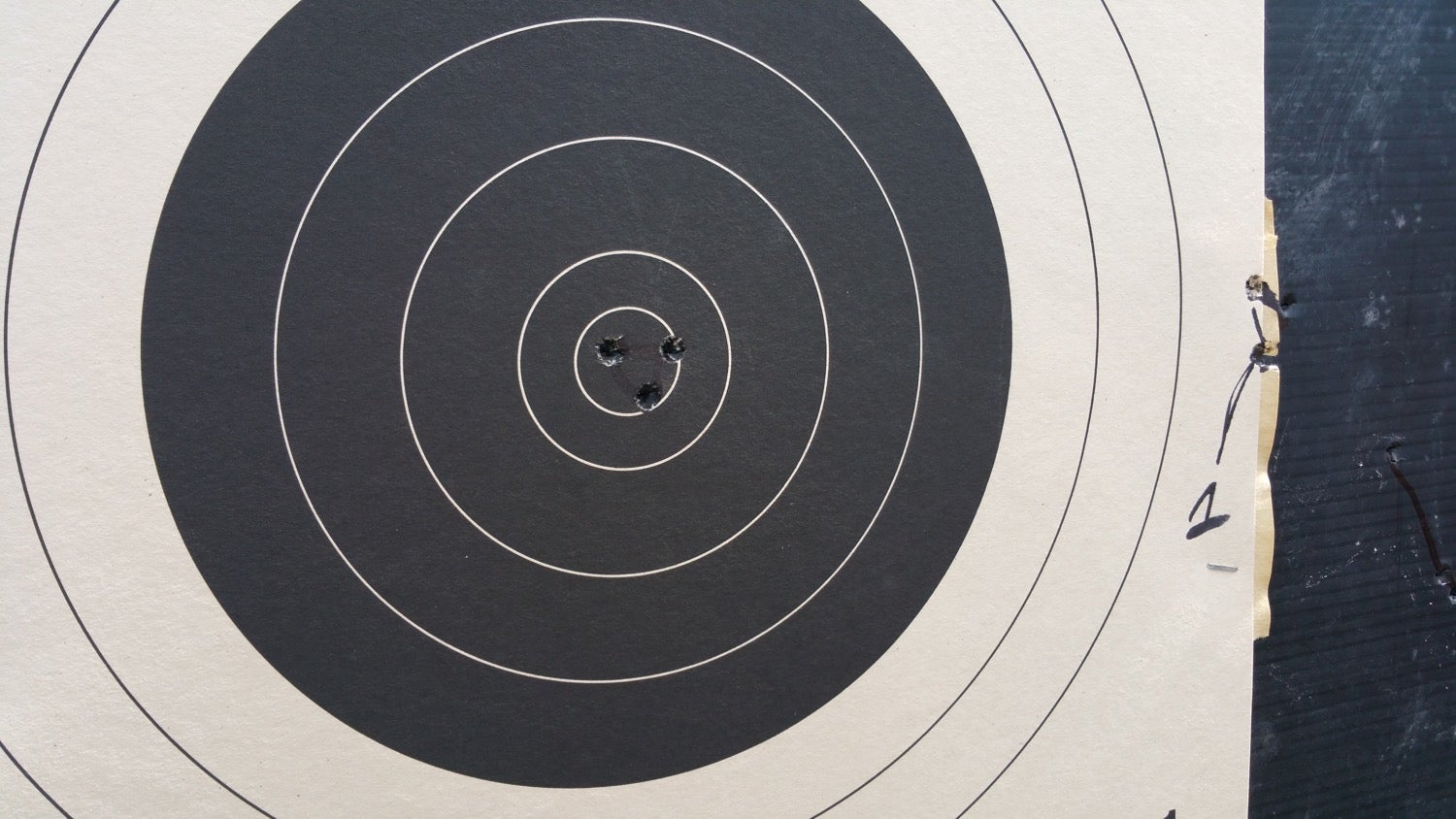
6.5 Creedmoor Sight-In after a whopping 12 rounds total
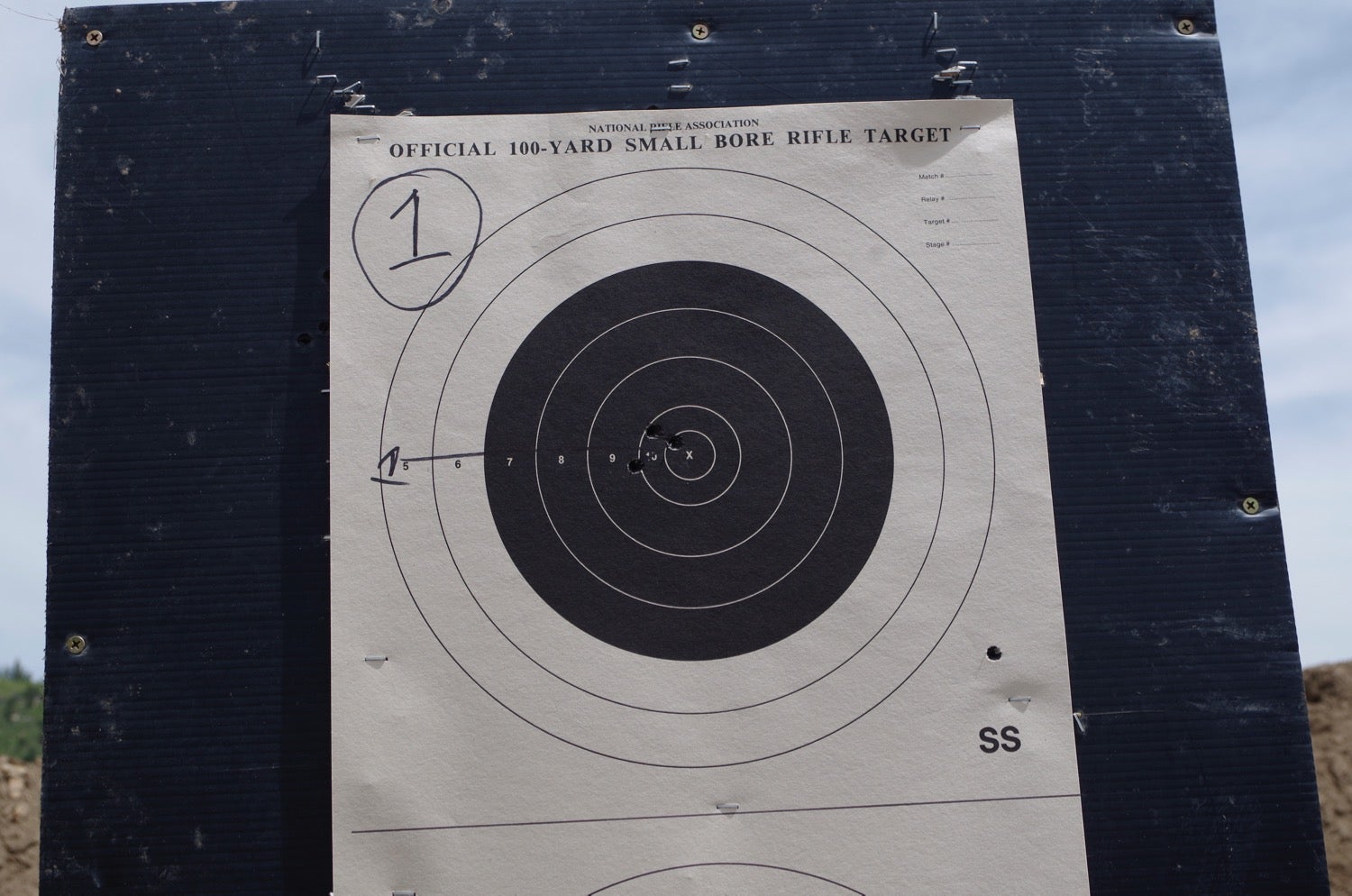
.308 Win Sight-In after a whopping 9 rounds total
I will discuss specifics of the rifles in their respective posts, but it was definitely interesting switching between the two platforms, especially because the scopes were both different types as well (the Swarovski X5i was in MOA, while the Leupold Mark 4 was in mils). The biggest difference between the rifles (besides caliber) was the stock. The Christensen Arms rifle had a fiberglass carbon fiber reinforced stock in a “traditional” boat paddle style. I had the Remington 700 outfitted with a MDT Chassis.
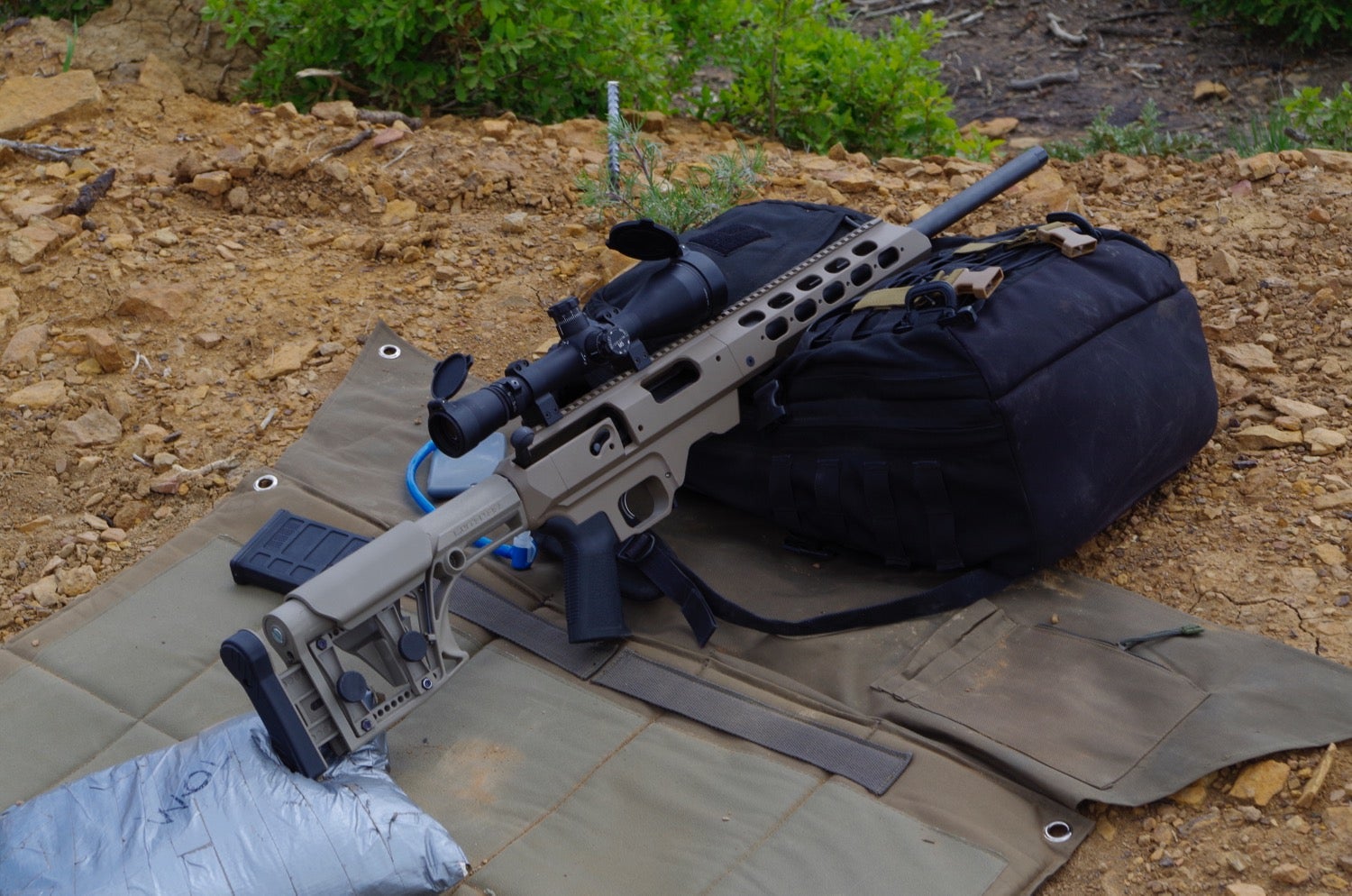
My newest “Bae”. A Remington 700 SPS Tactical mounted in an MDT Chassis.
I found it difficult to get a decent (and consistent cheek weld) with the Christensen Arms rifle as the stock did not have an adjustable comb. Since it was a review rifle, I couldn’t really make modifications to it so that it would be customized for me–during the class I stacked two Mechanix gloves for a temporary cheek rest. The other difference was having a solid place to stabilize with my support hand–the MDT Chassis has a nice solid scoop for your hand, while the boat paddle did not (I was hooking on the rear lug).
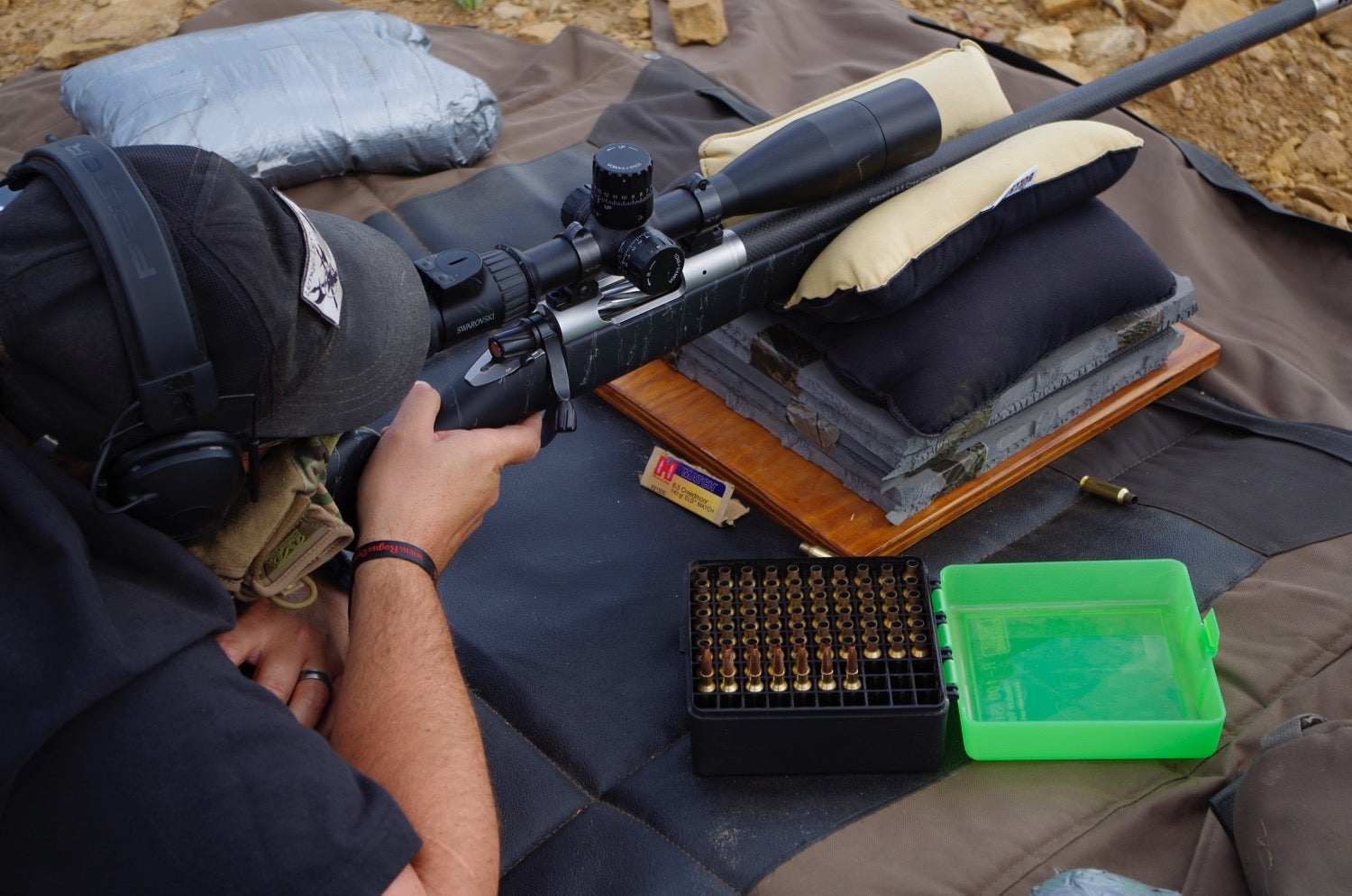
Note my improvised cheek rest…
Both of the above factors made me really appreciate the need to customize a precision rifle to the shooter. Despite not having the ability to customize the 6.5 Creedmoor, it still performed awesome–I can only imagine how it would be if I could have a customized cheek weld and solid platform to lock my support hand in place.
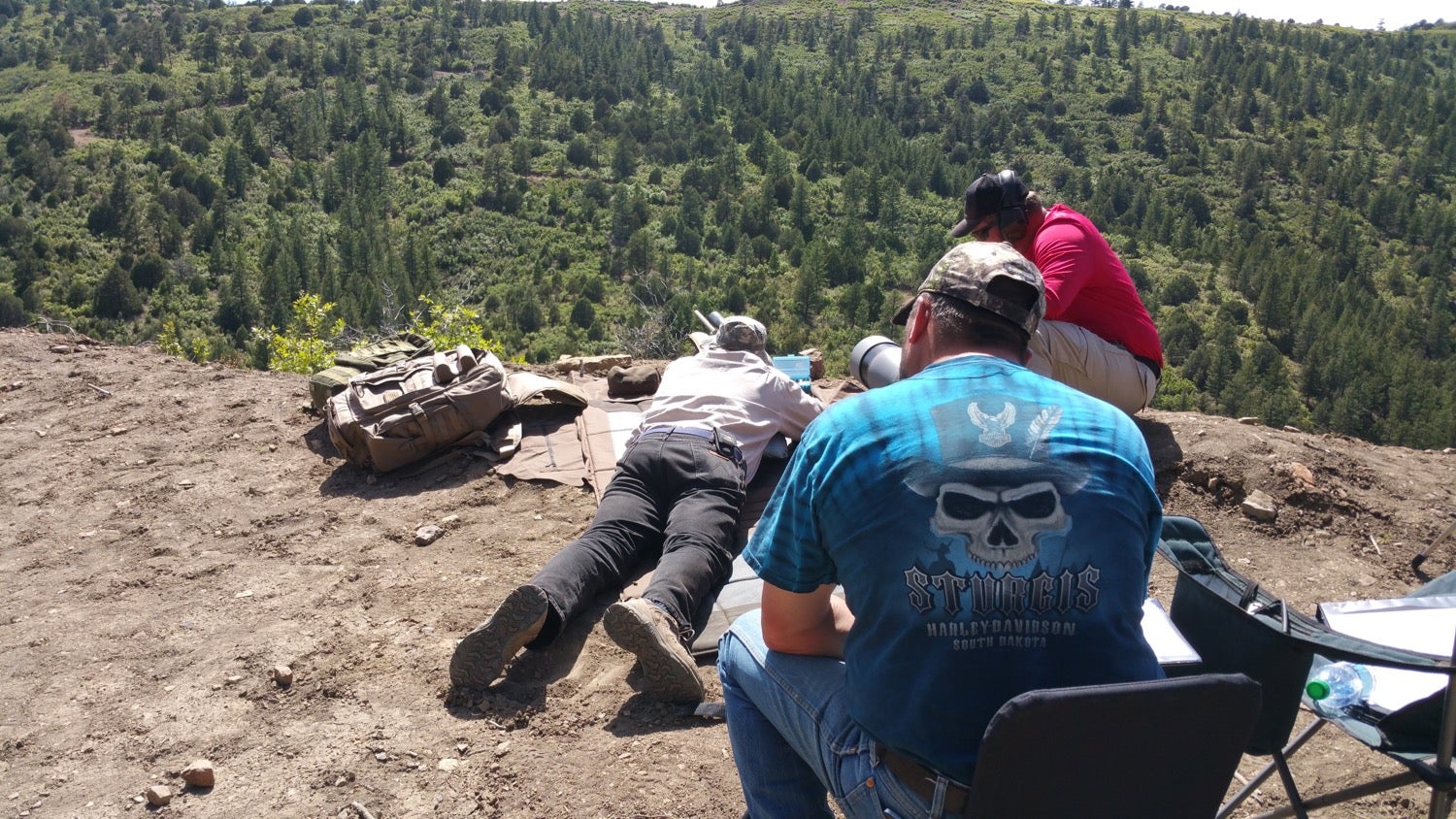
Shooter’s Paradise indeed. We had beautiful terrain shooting across this valley.
Both calibers did very well in the class, with the 6.5 Creedmoor maintaining the edge out past 800 yards. While both rifles were sub-MOA at 100 yards, at 1200 yards, I would be comfortable saying that the 6.5 Creedmoor was consistently 1.5MOA while the .308 was about 2.5MOA.
Also I observed that the 6.5 Creedmoor was less affected by environmental changes out past 600 yards. The far side of the valley we were shooting across underwent cloud cover (cooling a significant amount of the corridor, and thus changing our density alititude) during one of the sets, and the 6.5 Creedmoor was still hitting the targets, while the .308 started dropping just in front of the target. Both rounds maintained precision, though the .308 became less accurate.
Conclusions
Honestly, if you have any interest in shooting long range, I can whole-heartedly recommend Precision Long Range taught by Jon Weiler (and staff; kudos to you too Shane). Both of the instructors for the class were exceptionally patient and knowledgable instructors. There was exactly zero ego brought into this class, just good training and very good and constructive criticism.
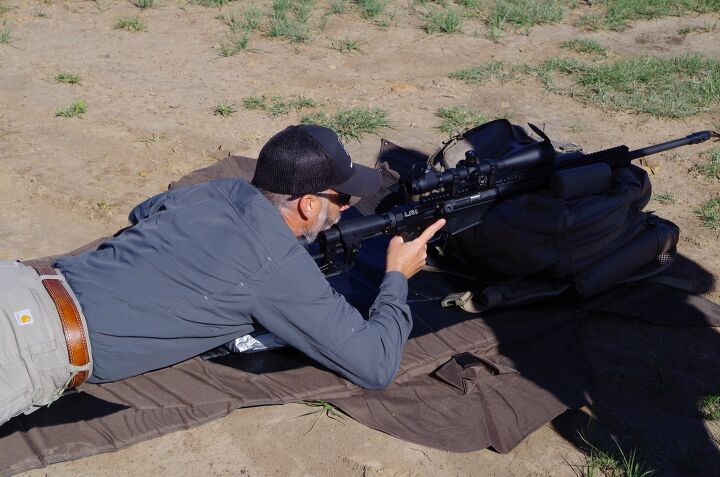
Jon demonstrating a stable shooting position.
The class runs $1000 for three full days of training (both shooting days we were in the backcountry for just about 10 hours). There are three levels of classes: level one is fundamentals, level two is angle shooting, and level three is unknown distances. After completing the core three class, you are able to take the “masters” classes which are all topical, and cover things like barriers and unconventional positions. Is it expensive? I suppose that depends on what your goals are. For me, I wanted to not only start the path to proficiency with precision shooting, but also to be able to do a more effective practical review of precision rifles and optics.
There was so much in this class that I could probably double the size of this post relating things that I learned. Suffice to say that I definitely got my value (and then some) from the class.
Whittington University offers a number of other classes as well, including defensive pistol, shotgun and rifle courses, as well as the “Extreme Long Range” series where you will shoot unknown distances out to 3000 yards (they have the well deserved, and confirmed, boast of having a student place multiple rounds on a 1MOA target at 2.07 miles).
Personally I know I will be taking, at the very least, the level 2 and level 3 Precision Long Range classes.
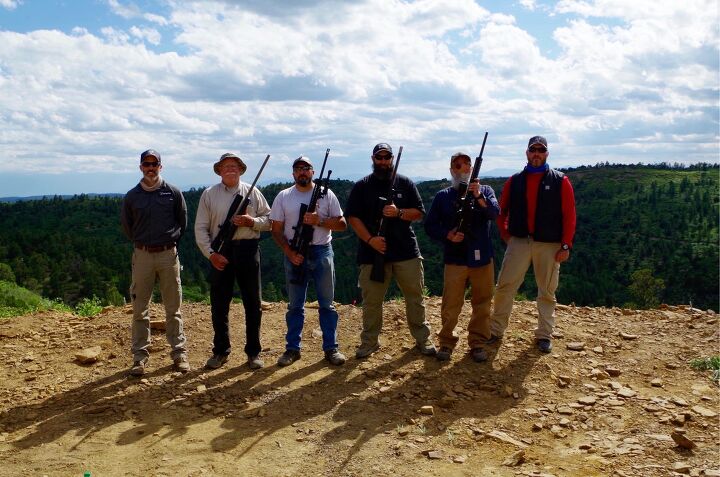
Awesome class with these rapscallions. “Mack” was blurred for privacy.
You can find out more information about the classes (and sign up) at: http://whittingtonu.org/
 Your Privacy Choices
Your Privacy Choices
